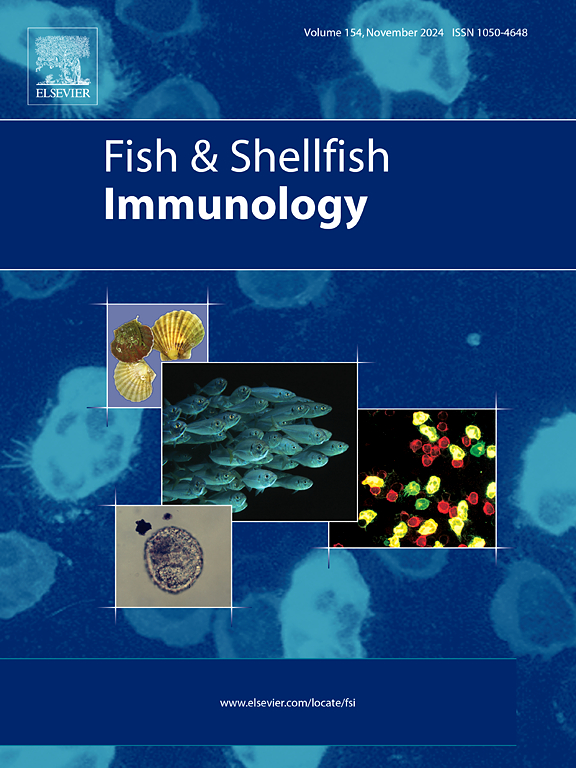Characterization of a serine protease homolog from Macrobrachium nipponense and its involvement in AMP synthesis and proPO activation
IF 4.1
2区 农林科学
Q1 FISHERIES
引用次数: 0
Abstract
Serine protease homolog (SPH) with a clip domain is crucial for activating prophenoloxidase. In this study, we isolated and characterized an SPH gene from Macrobrachium nipponense, designated as MnSPH. The full-length cDNA sequence of MnSPH was 1709 bp, including an open reading frame of 1383 bp that encoded 460 amino acids. The predicted MnSPH protein contained a signal peptide, two low-density complex regions, and a Tryp_SPc domain. Although SMART was unable to predict a clip domain in MnSPH, it does possess a conserved cysteine pattern that resembles the characteristic pattern of clip domains. Phylogenetic analysis revealed that MnSPH first clustered with SPH of Pacifastacus leniusculus and subsequently formed a clade with other SPHs or prophenoloxidase-activating factors (PPAFs) from crustaceans. MnSPH exhibited high expression levels in the gills and stomach of M. nipponense, with relatively lower expression in other tissues. Upon infection with Vibrio parahaemolyticus and Staphylococcus aureus, the expression levels of MnSPH were significantly upregulated at multiple time points in the hemocytes of M. nipponense. Furthermore, the knockdown of MnSPH in the hemocytes resulted in the inhibition of several antimicrobial peptide (AMP) genes and a significant reduction in phenoloxidase activity. The survival rate of prawns was reduced after MnSPH knockdown. These findings suggested that MnSPH plays a pivotal role in the innate immune response of M. nipponense during pathogen infection.
求助全文
约1分钟内获得全文
求助全文
来源期刊

Fish & shellfish immunology
农林科学-海洋与淡水生物学
CiteScore
7.50
自引率
19.10%
发文量
750
审稿时长
68 days
期刊介绍:
Fish and Shellfish Immunology rapidly publishes high-quality, peer-refereed contributions in the expanding fields of fish and shellfish immunology. It presents studies on the basic mechanisms of both the specific and non-specific defense systems, the cells, tissues, and humoral factors involved, their dependence on environmental and intrinsic factors, response to pathogens, response to vaccination, and applied studies on the development of specific vaccines for use in the aquaculture industry.
 求助内容:
求助内容: 应助结果提醒方式:
应助结果提醒方式:


